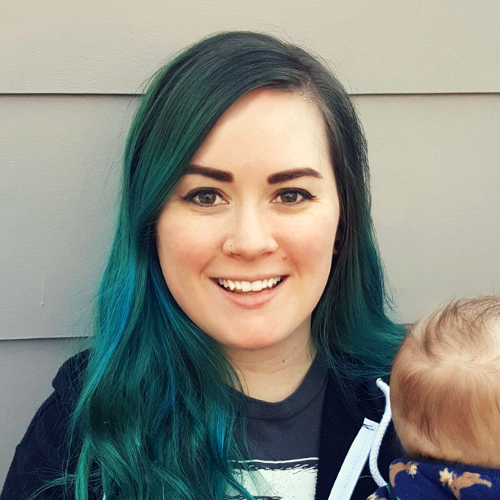It can be hard to figure out what all you need to start your own podcast. There seems to be so many working pieces, including equipment and software, among many other decisions and options for how you want to make your own podcast. So, let us help you with figuring out what equipment and software you need to start your podcast as well as to grow it in the future.
To begin, if you would like a more general, quick overview of how to record a podcast, check out our article here.
For more details about the equipment you need, keep on reading!
The Basics
- Computer (with Internet access)
- You need a reliable computer with Internet access to record, edit, and upload your podcast. Although many of us have smartphones that can access the Internet, a smartphone will not be sufficient for podcasting, so a computer is needed in order to be able to start up your podcast.
- Recording Software
- In order to record your podcast, you need to find the right recording software for you. The two varieties of recording software to choose from are: cloud-based and local recording. Cloud-based means that the recording is done completely online and is stored there as well, meaning you do not need to save anything to your computer nor download an application. Local recording means that you need to download an application if it is not already available on your computer and you will have to store your recordings on your computer as well. Both varieties of recording software have free options as well as versions available for purchase that include more advanced features, including editing features and higher quality audio.
- Cloud-Based & Free:
- Zencastr: There is a limited free version available as well as an unlimited version for $20/month.
- Cloud-Based & Available for Purchase:
- Ringr: They offer a Basic version for $7.99/month as well as a Premium version for $18.99/month.
- Local Recording & Free:
- Local Recording & Available for Purchase:
- Adobe Audition (MacOS & Windows): $20.99/month
- Note: Adobe Audition also has Cloud storage, so you are able to record and save your audio files online.
- Logic Pro (MacOS): One-time purchase of $199.99
- Riverside.fm: They support local audio and video recording all from your browser, and they offer 3 different plans: $19/month for audio recording only, $39/month for audio+video recording, and $49/month for audio+video+live call-in recording and livestream capabilities.
- Adobe Audition (MacOS & Windows): $20.99/month
- Cloud-Based & Free:
- In order to record your podcast, you need to find the right recording software for you. The two varieties of recording software to choose from are: cloud-based and local recording. Cloud-based means that the recording is done completely online and is stored there as well, meaning you do not need to save anything to your computer nor download an application. Local recording means that you need to download an application if it is not already available on your computer and you will have to store your recordings on your computer as well. Both varieties of recording software have free options as well as versions available for purchase that include more advanced features, including editing features and higher quality audio.
Note: Many of the recording software options have editing capabilities as well. Audacity, Garageband, Adobe Audition, and Logic Pro all have editing features, so if you are looking to also edit your podcast, these are great all-in-one recording and editing software options.
- Microphone
- A microphone is obviously essential to being able to record your voice for your podcast. If you are just starting out, some quick options for testing out podcasting are built-in mics, earbuds, and headsets. Most computers and smartphones have built-in mics that you can use to record and earbuds and headsets are affordable and easily accessible options that include a microphone. However, built-in mics, earbuds, and headsets will provide the lowest audio quality. So, a traditional microphone is your best bet at getting a great sounding podcast and it is an essential piece of equipment, especially if you are really serious about continuing your podcast. Some high quality, afforable microphones are:
To see our full list of top-rated microphones, click here.
These are the basic pieces of equipment that you need to start up your podcast, however there are many other pieces of equipment that you can add to your setup to improve the audio quality and ease of your podcasting process even further.
Equipment to Further Improve your Podcast
- Headphones
- Headphones help you prevent mistakes while recording. You are able to monitor what the audio is like as well as ensure that your setup is working properly. Earbuds can certainly work, however, over-ear headphones are recommended for the best results. Some great budget headphones include:
- Audio Interface
- Audio interfaces allow you to expand upon and improve the audio capabilities of your computer. This piece of hardware allows you to connect inputs, such as microphones, and allows for a variety of outputs as well. Along with a mixer, discussed below, an audio interface will help improve the quality of your audio.
- Mixer
- A mixer gives you more control over levels, inputs, outputs, etc. If you want to improve the quality of your audio, adding a mixer to your setup can really help you gain the control to take your podcast quality to the next level.
- Headphone Amplifier
- If you ever have any guests on your podcast, a headphone amplifier will come in handy because it allows you to plug in multiple headphones at once. Not only does it allow you to plug in and control multiple headphones, it also allows for the best audio quality, even at the maximum volume levels.
If you are looking for information about how to record podcast interviews, check out our article here.
- Microphone Boom Arm/Mic Stand
- A microphone boom arm or a mic stand can be really helpful so that you can move the mic around and adjust it to your liking. Also, it helps to clear up table space so that you can better utilize the space that you have for your setup.
- Note: Boom Arms tend to be a bit pricey, so mic stands are a very affordable alternative. Also, you may need to purchase mic clips/clamps to accompany your microphone setup, so read the product description fully to ensure that you know what is included with your purchase.
- A microphone boom arm or a mic stand can be really helpful so that you can move the mic around and adjust it to your liking. Also, it helps to clear up table space so that you can better utilize the space that you have for your setup.
- Shock Mount
- Shock mounts help to prevent unwanted sounds in your recording, including movements of the mic, tapping, typing, and other vibrations.
- Note: Sometimes these are included with your mic, so be sure to check the description of your mic beforehand. Also, most shock mounts need to be compatible with your specific microphone.
- Rode PSM 1 Shockmount
- Note: This shock mount is only compatible with some microphones, so read the specifications carefully.
- Rode PSM 1 Shockmount
- Note: Sometimes these are included with your mic, so be sure to check the description of your mic beforehand. Also, most shock mounts need to be compatible with your specific microphone.
- Shock mounts help to prevent unwanted sounds in your recording, including movements of the mic, tapping, typing, and other vibrations.
- Cables
- You may need to purchase a variety of cables to connect all of your pieces in your setup. Some of these cables may include:
- 3.5mm to ¼ inch audio cable
- 3.5mm audio cable
- XLR mic cables
- ¼ inch speaker cable
- ¼ inch insert cable
- You may need to purchase a variety of cables to connect all of your pieces in your setup. Some of these cables may include:
- Pop Filters/Windscreens
- Pop Filters/Windscreens help protect your microphone from picking up any harsh noises. For example, when you say the letters b, p, and t, there are bursts of air that the microphone picks up. Adding this to your setup helps to keep your audio levels under control so that those bursts of air do not show up on your recording. Some affordable options are:
- Pop Filter: Premium 6-inch Pop Filter
- Windscreen: AT2020 Foam Windscreen
- Pop Filters/Windscreens help protect your microphone from picking up any harsh noises. For example, when you say the letters b, p, and t, there are bursts of air that the microphone picks up. Adding this to your setup helps to keep your audio levels under control so that those bursts of air do not show up on your recording. Some affordable options are:
- Acoustic Treatment
- Adding an acoustic treatment to your podcasting area can really help to improve audio quality if your recording area has a lot of reverb or echo.
We've listed a few high quality, affordable options for each piece of equipment, however, there are tons of options out there. So, consider your own price points and your own requirements for your podcast and some simple Google searches will produce numerous options for whatever you are looking for. Also, it is extremely important to read the descriptions of the products that you buy to have a full understanding of everything that is included with the products as well as to ensure that all of the pieces are compatible with each other. The last thing that you want is to be missing an essential piece to your setup or to have pieces that are not compatible. And, remember, it is your podcast and your setup, so start off with what works for you and build up from there. Happy podcasting!
Looking for info on how to actually set up a home studio? Check out this article.
Interested in podcasting with Live365? Join our waitlist to be the first to be notified when podcasting is available on the Live365 platform.
Discover thousands of free stations from every genre of music and talk at Live365.com. Keep up with the latest news by following us on Facebook (Live365 (Official) and Live365 Broadcasting) and Twitter (@Live365 and @Broadcast365)!
Article Image: A microphone pictured in front of a laptop. (Richstar via Pixabay.)


